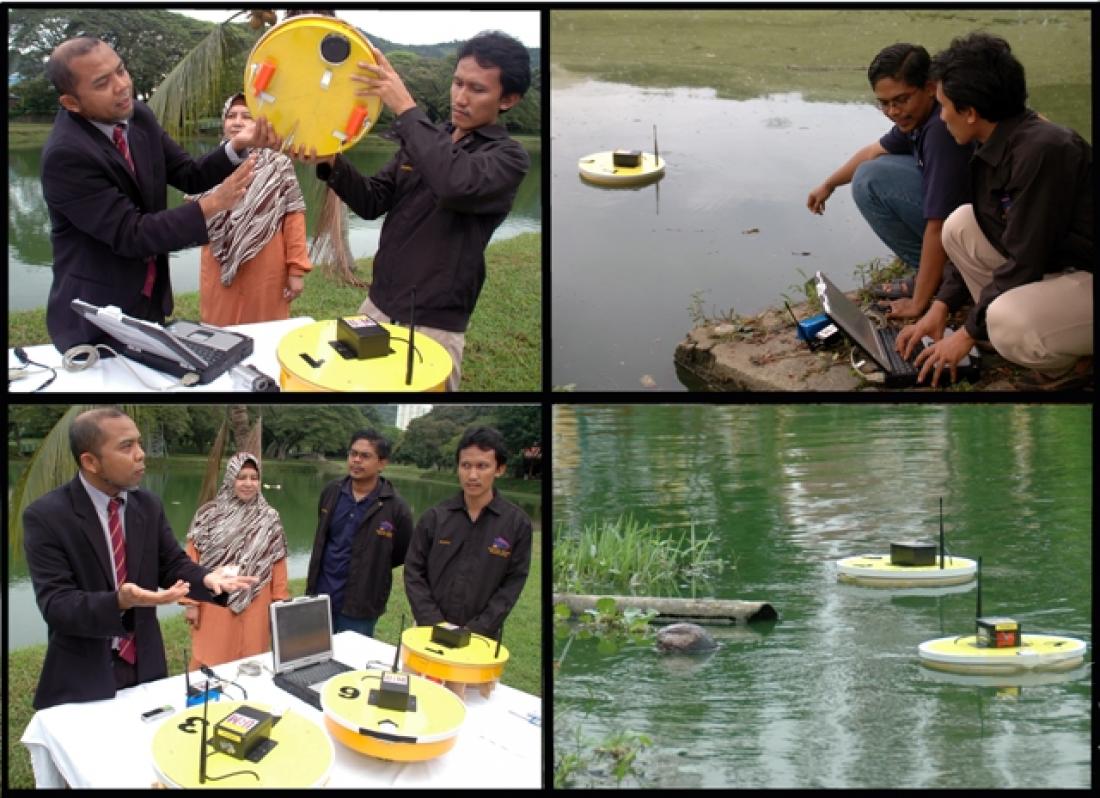Researchers from the School of Electrical and Electronic Engineering, led by Prof. Dr. Mohd. Rizal, giving a brief explanation on how to handle Drossosbots.
Known as Drososbots, the innovation uses the mini ASV team concept and was inspired by a biological method of seeking pathways by the Drosophila fly. The innovation is capable of carrying out measurements swiftly, accurately and extensively.
With a complete range of sensors, Drosobots also can potentially be used in the business of monitoring and enforcement, mapping and surveying as well as an aid in rescuing victims of drowning.
The lead researcher from the School of Electrical and Electronic Engineering, Assoc. Prof. Dr. Mohd. Rizal Arshad said that currently, in Malaysia there is no such system that can collect marine data quickly and at minimal cost.
He said that even if there were, the system that has been identified as the most similar can only be obtained from U.S. manufacturers, at a price of not less than RM200, 000 per unit compared to Drosobots, estimated to be commercialized at a cost of about RM 18,000.
“Drososbots is the first in the world that can take measurements of the surface of the water accurately, quickly and reduce manpower. It is also portable and can be supervised by users who don’t have a technical background. The cost of using this equipment for underwater mapping can be reduced substantially, it can simplify and facilitate maintenance as it utilises local technology and it allows for more frequent measurements to be carried out,” he said.
He said this at a press conference to introduce Drosobots at USM today. Also present were co-researchers, Assoc. Prof. Dr. Umi Kalsum and Zulkifli Zainal Abidin.
Dr. Mohd. Rizal added that Drosobots has several advantages, including GPS equipment fitted for a depth of more than 3 meters, compass sensor with an accuracy of about 0.5 ° and internal measurement accuracy of 15cm.
“Drosobots can go as deep as 30 kilometers and can last for almost three hours. It can also be controlled manually using a remote control or programmed through the movement of dots based on GPS information,” he said.
He also said that with the increase in illegal activities involving water resources such as sand mining of riverbeds and waste disposal, swift and accurate underwater mapping is very important.
“Currently, the process of data collection using the existing equipment takes up to two weeks. However, with Drosobots, data can be obtained in less than an hour and it enables enforcement agencies to expedite their actions,” he explained.
Commenting on the prospects for Drosobots, he said: “Many people can use the applications of the mini ASV, including agencies that are involved in the business of mapping the seabed, finding land mines, surveying the land and ocean environment, port security, tracking of oil spills and the like.”



